Posted on September 28th, 2022 by Mary Lord
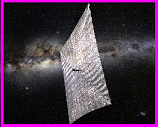 Teams of students in grades 7 to 9 follow the engineering design process to create, construct, test, and improve model solar sails made of aluminum foil to move cardboard tube satellites through “space” on a string. During the process, they learn about Newton’s laws of motion and the transfer of energy from wave energy to mechanical energy.
Teams of students in grades 7 to 9 follow the engineering design process to create, construct, test, and improve model solar sails made of aluminum foil to move cardboard tube satellites through “space” on a string. During the process, they learn about Newton’s laws of motion and the transfer of energy from wave energy to mechanical energy.
Read More
Filed under: Class Activities, Grades 6-8, Grades 6-8, Grades 9-12, Grades 9-12, Lesson Plans | Comments Off on Solar Sails: The Future of Space Travel
Tags: Aerospace, Class Activities, Design, energy transfer, Engineering Design Process, forces and motion, Grades 6-8, Grades 9-12, Lesson Plan, Newton, Newton's Laws, NGSS aligned activity, solar sails, space exploration, spacecraft, teachengineering
Posted on April 12th, 2020 by Mary Lord
 On April 3, U.S. health officials recommended an arts-and-crafts project to thwart the spread of coronavirus: Make a cloth face mask and wear it when you go out in public. Here are some tips and templates for turning T-shirts and other materials into DIY personal protective gear.
On April 3, U.S. health officials recommended an arts-and-crafts project to thwart the spread of coronavirus: Make a cloth face mask and wear it when you go out in public. Here are some tips and templates for turning T-shirts and other materials into DIY personal protective gear.
Read More
Filed under: Class Activities, Special Features, Web Resources | Comments Off on Face Mask Engineering
Tags: CDC, coronavirus, Covid-19 protective gear, Design, face mask, maker challenges, sewing, Web Resources
Posted on February 6th, 2020 by Mary Lord
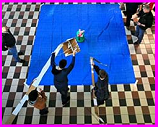 A classic engineering challenge involves designing and building devices that can deliver necessary goods to “Toxic Island,” an island that has been quarantined by the World Health Organization due to a nasty outbreak of disease. Working within specific constraints, including limited materials, middle school students follow the engineering design process to design, test, and improve a device that can deliver “medicine” and other vital supplies accurately and quickly without touching either the water or island.
A classic engineering challenge involves designing and building devices that can deliver necessary goods to “Toxic Island,” an island that has been quarantined by the World Health Organization due to a nasty outbreak of disease. Working within specific constraints, including limited materials, middle school students follow the engineering design process to design, test, and improve a device that can deliver “medicine” and other vital supplies accurately and quickly without touching either the water or island.
Read More
Filed under: Class Activities, Grades 9-12, Grades 9-12, Lesson Plans | Comments Off on Toxic Island: Design Devices to Deliver Goods
Tags: Biomedical Engineering, Class Activities, commerce, delivery, Design, engineering design challenge, Engineering Design Process, Grades 9-12, Lesson Plan, maker challenges, pandemic, public health
Posted on January 10th, 2019 by Mary Lord
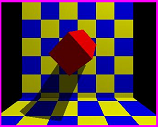 Spatial visualization – the ability to imagine objects from different angles – is a key STEM problem-solving skill that varies widely by gender, race, and cultural background. Yet it’s rarely taught. The University of Colorado-Boulder’s College of Engineering developed an inexpensive training program that closed STEM performance gaps so well it’s required of all incoming engineering students. The curriculum is now available for free online so any school can advance STEM equity.
Spatial visualization – the ability to imagine objects from different angles – is a key STEM problem-solving skill that varies widely by gender, race, and cultural background. Yet it’s rarely taught. The University of Colorado-Boulder’s College of Engineering developed an inexpensive training program that closed STEM performance gaps so well it’s required of all incoming engineering students. The curriculum is now available for free online so any school can advance STEM equity.
Read More
Filed under: K-12 Outreach Programs, Special Features, Web Resources | Comments Off on STEM Equity? Teach This Key Skill
Tags: 3-D modeling, ASEE Prism magazine, Curriculum, Design, Engineering Plus, Internet Resources, Jacob Segil, Outreach, Research on Learning, Resources for Teachers, spatial visualization training workshops, STEM education, STEM equity, Technology for Learning, University of Colorado Boulder College of Engineering, Web Resources
Posted on October 1st, 2018 by Mary Lord
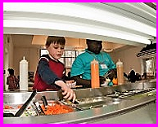 Every day, Americans waste enough food to fill a football stadium. To mark National STEM/STEAM Day on November 8, the STEMconnector’s National Day of Design contest is challenging students of all grade levels to design solutions for eliminating food waste in their school’s cafeteria. Meanwhile the U.S. Department of Agriculture and Environmental Protection Agency are hosting food waste and recovery challenges.
Every day, Americans waste enough food to fill a football stadium. To mark National STEM/STEAM Day on November 8, the STEMconnector’s National Day of Design contest is challenging students of all grade levels to design solutions for eliminating food waste in their school’s cafeteria. Meanwhile the U.S. Department of Agriculture and Environmental Protection Agency are hosting food waste and recovery challenges.
Read More
Filed under: K-12 Outreach Programs, Special Features | Comments Off on Take a Bite Out of Food Waste
Tags: Competitions for Students, Contest, Design, Engineering Design, food recovery, food waste, hunger, National Design Day, National STEM/STEAM Day, school cafeteria, STEMconnector, USDA
Posted on September 5th, 2018 by ASEE
 Students in grades 3 to 5 work in groups to design a structure that will withstand and protect people from tornadoes. Each group then creates a poster with the name of their engineering firm and a picture of their structure. Finally, each group presents their posters to the class.
Students in grades 3 to 5 work in groups to design a structure that will withstand and protect people from tornadoes. Each group then creates a poster with the name of their engineering firm and a picture of their structure. Finally, each group presents their posters to the class.
Read More
Filed under: Class Activities, Grades K-5, Grades K-5, Lesson Plans | Comments Off on Build it Better!
Tags: Civil Engineering, Design, Disaster, Earth Science, National Severe Storms Laboratory, NOAA, poster, STEAM, Structural Engineering, Tornadoes, Weather
Posted on August 20th, 2018 by Mary Lord
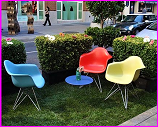 A farm, community art show, dinner party, or classroom? The possibilities are endless when transforming a parking space into a roadside showcase for the design side of STEM this PARK(ing) Day, Friday, September 21.
A farm, community art show, dinner party, or classroom? The possibilities are endless when transforming a parking space into a roadside showcase for the design side of STEM this PARK(ing) Day, Friday, September 21.
Read More
Filed under: Class Activities, K-12 Outreach Programs, Special Features, Web Resources | Comments Off on Pop-up STEAM PARK(ing) Lots
Tags: ASLA, Class Activities, Design, installations, landscape architecture, PARKIing) Day, Public Policy, public space, Resources for Teachers, STEAM, traffic, urban infrastructure, urban planning, Web Resources
Posted on May 15th, 2018 by Mary Lord
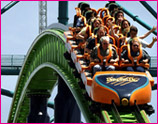 A lot of engineering goes into making today’s gravity-defying rides both exciting and safe. Read about some roller coaster designers and the skills they bring to creating the world’s most thrilling wooden, steel, and virtual-reality experiences.
A lot of engineering goes into making today’s gravity-defying rides both exciting and safe. Read about some roller coaster designers and the skills they bring to creating the world’s most thrilling wooden, steel, and virtual-reality experiences.
Read More
Filed under: K-12 Education News, Special Features | Comments Off on Engineering Thrills
Tags: Design, Energy, Engineering, engineering careers, Feature Story, forces, Physics, roller coaster engineering, Videos
Posted on April 30th, 2018 by Mary Lord
 From dockless bike sharing and airless tires to Eta, the world’s fastest pedal bike (photo), bicycle technology has come a long way since the 1858 velocipede Boneshaker debuted. And engineering students and researchers have powered many of the innovations.
From dockless bike sharing and airless tires to Eta, the world’s fastest pedal bike (photo), bicycle technology has come a long way since the 1858 velocipede Boneshaker debuted. And engineering students and researchers have powered many of the innovations.
Read More
Filed under: Special Features | Comments Off on Wheels of Wonder
Tags: Aerovelo, bicycle design, Design, Engineering, Eta, MIT, Ohio State, recumbent bike, Stanford
 Teams of students in grades 7 to 9 follow the engineering design process to create, construct, test, and improve model solar sails made of aluminum foil to move cardboard tube satellites through “space” on a string. During the process, they learn about Newton’s laws of motion and the transfer of energy from wave energy to mechanical energy.
Teams of students in grades 7 to 9 follow the engineering design process to create, construct, test, and improve model solar sails made of aluminum foil to move cardboard tube satellites through “space” on a string. During the process, they learn about Newton’s laws of motion and the transfer of energy from wave energy to mechanical energy. 








 On April 3, U.S. health officials recommended an arts-and-crafts project to thwart the spread of coronavirus: Make a cloth face mask and wear it when you go out in public. Here are some tips and templates for turning T-shirts and other materials into DIY personal protective gear.
On April 3, U.S. health officials recommended an arts-and-crafts project to thwart the spread of coronavirus: Make a cloth face mask and wear it when you go out in public. Here are some tips and templates for turning T-shirts and other materials into DIY personal protective gear. A classic engineering challenge involves designing and building devices that can deliver necessary goods to “Toxic Island,” an island that has been quarantined by the World Health Organization due to a nasty outbreak of disease. Working within specific constraints, including limited materials, middle school students follow the engineering design process to design, test, and improve a device that can deliver “medicine” and other vital supplies accurately and quickly without touching either the water or island.
A classic engineering challenge involves designing and building devices that can deliver necessary goods to “Toxic Island,” an island that has been quarantined by the World Health Organization due to a nasty outbreak of disease. Working within specific constraints, including limited materials, middle school students follow the engineering design process to design, test, and improve a device that can deliver “medicine” and other vital supplies accurately and quickly without touching either the water or island. Spatial visualization – the ability to imagine objects from different angles – is a key STEM problem-solving skill that varies widely by gender, race, and cultural background. Yet it’s rarely taught. The University of Colorado-Boulder’s College of Engineering developed an inexpensive training program that closed STEM performance gaps so well it’s required of all incoming engineering students. The curriculum is now available for free online so any school can advance STEM equity.
Spatial visualization – the ability to imagine objects from different angles – is a key STEM problem-solving skill that varies widely by gender, race, and cultural background. Yet it’s rarely taught. The University of Colorado-Boulder’s College of Engineering developed an inexpensive training program that closed STEM performance gaps so well it’s required of all incoming engineering students. The curriculum is now available for free online so any school can advance STEM equity.  Every day, Americans waste enough food to fill a football stadium. To mark National STEM/STEAM Day on November 8, the STEMconnector’s National Day of Design contest is challenging students of all grade levels to design solutions for eliminating food waste in their school’s cafeteria. Meanwhile the U.S. Department of Agriculture and Environmental Protection Agency are hosting food waste and recovery challenges.
Every day, Americans waste enough food to fill a football stadium. To mark National STEM/STEAM Day on November 8, the STEMconnector’s National Day of Design contest is challenging students of all grade levels to design solutions for eliminating food waste in their school’s cafeteria. Meanwhile the U.S. Department of Agriculture and Environmental Protection Agency are hosting food waste and recovery challenges. Students in grades 3 to 5 work in groups to design a structure that will withstand and protect people from tornadoes. Each group then creates a poster with the name of their engineering firm and a picture of their structure. Finally, each group presents their posters to the class.
Students in grades 3 to 5 work in groups to design a structure that will withstand and protect people from tornadoes. Each group then creates a poster with the name of their engineering firm and a picture of their structure. Finally, each group presents their posters to the class. A farm, community art show, dinner party, or classroom? The possibilities are endless when transforming a parking space into a roadside showcase for the design side of STEM this PARK(ing) Day, Friday, September 21.
A farm, community art show, dinner party, or classroom? The possibilities are endless when transforming a parking space into a roadside showcase for the design side of STEM this PARK(ing) Day, Friday, September 21.  A lot of engineering goes into making today’s gravity-defying rides both exciting and safe. Read about some roller coaster designers and the skills they bring to creating the world’s most thrilling wooden, steel, and virtual-reality experiences.
A lot of engineering goes into making today’s gravity-defying rides both exciting and safe. Read about some roller coaster designers and the skills they bring to creating the world’s most thrilling wooden, steel, and virtual-reality experiences. From dockless bike sharing and airless tires to Eta, the world’s fastest pedal bike (photo), bicycle technology has come a long way since the 1858 velocipede Boneshaker debuted. And engineering students and researchers have powered many of the innovations.
From dockless bike sharing and airless tires to Eta, the world’s fastest pedal bike (photo), bicycle technology has come a long way since the 1858 velocipede Boneshaker debuted. And engineering students and researchers have powered many of the innovations.